An Interview with Kiki Smith of Smith College's Historic Clothing Collection
Meet the Expert - of all experts - in women's clothing
21st & 18th muses on culture. Covering art, history and fashion and featuring interviews with voices in fashion and leaders in the arts. Sometimes we will feature photo journals of our recent time travel. By Lauren Lynch Wemple (@lolynchwemple). Follow 21st & 18th (@21stand18th) on Instagram.
Last September, I woke up in Brooklyn on an otherwise lame Monday morning trying to keep my cool. I chatted with my cat, Jasper, took stock of my body to figure out whether or not I was dehydrated (which I always am) and began to get ready for the day. I remember that day I was dressing off of an equation because I really needed my clothes to work for me. It went something like this:
My trusty 329A Jeans in ‘67 Patina by Imperfects + a blue and white striped Bonne Graine button up shirt by Maison Labiche + a pair of white tube socks (Hanes) + my well worn G.H. Bass Weejuns + an Iconic Doeskin Two Button Blazer by Polo Ralph Lauren + a red cashmere sweater I stole from my mother’s closet. I shoved my laptop, charger, a super old white Polo Ralph Lauren baseball cap and a snack or two into my R. Horn suede tote and walked out into the city.
In that classic yet comfortable ensemble I knew would deliver for me, I embarked upon a 3 hour drive from New York City to Northampton, MA, and considered my life over those 180 minutes. My favorite music, all jumbled up in Spotify, became the soundtrack to the movie of my life, which if written that day would have been about a young and hungry writer driving a rented mini van to Smith College to meet and interview a fabulous theatre professor and historic clothing expert named Kiki Smith, whose work with historic clothing has lengthy press credits, the likes of the New York Times1 and Wall Street Journal2 - as my imagination was running wild, I kept chuckling to myself over the fact that her surname happened to be Smith.
On that drive, I continually dog ear-ed a mix of feelings that were creeping up, I was so happy and free. Happy, free, excited to visit Smith and meet Kiki and ask her one million questions about the college’s Historic Clothing Collection:
What would Kiki be like? How does she store thousands of clothes, shoes and accessories? How would she be dressed? Does she dress for work with an equation like I do? Did women 125 years ago think about getting dressed each morning that same way I did today? How does she find clothing to grow her collection? Will she let me touch the clothes? What’s her favorite piece in the collection? Or is naming such profane chatter?
16 September 2024, Northampton, Massachusetts
LLW: When did your fascination with clothing begin?
KS: It mostly started with theater. When I was an undergraduate here at Smith3 - I backed my way into a theater major and became interested in set and costume design. It all appealed to me. I ended up being steered into costume design because [at the time] it was a woman’s area more than set design.
I went on and studied costume design and theater in graduate school and ended up coming back here, to Smith, for presumably a year - a sabbatical replacement. However they ended up hiring me and I've just been chugging along since, finally becoming a tenured faculty member.
What came out of [studying and teaching] costume design was a love for finding the materials, styles and varieties of clothing. There are plenty of beautiful collections of high end and chic stuff, but I was mostly designing plays about ordinary people, and there's not a whole lot of big fancy glamorous books on that, so I ended up realizing that in the library here we had Sears and Roebuck4 catalogs that got me started.
LLW: So all of this, this Historic Clothing Collection that has grown so extensive, was started by resources you had at Smith?
KS: When I first came back I moved a group of couture clothes out of costume storage and put them into metal cabinets that I could use in class and that we could go to when we were doing a Chekhov5 play from 1902. From those beautiful examples of construction of skirts we could take patterns from and work from.
LLW: And about when is this?
KS: About 1974…Upon my return to Smith, I sorted clothing out of our existing costume collection, and I kept finding things and realizing that, “This is not just an ordinary skirt. This is an early fabric.” Early on in those days, students found parts of, what would become, this historic collection in the costume storage closets and they were dazzled - as they should be - when I brought the garments into class to use while teaching.
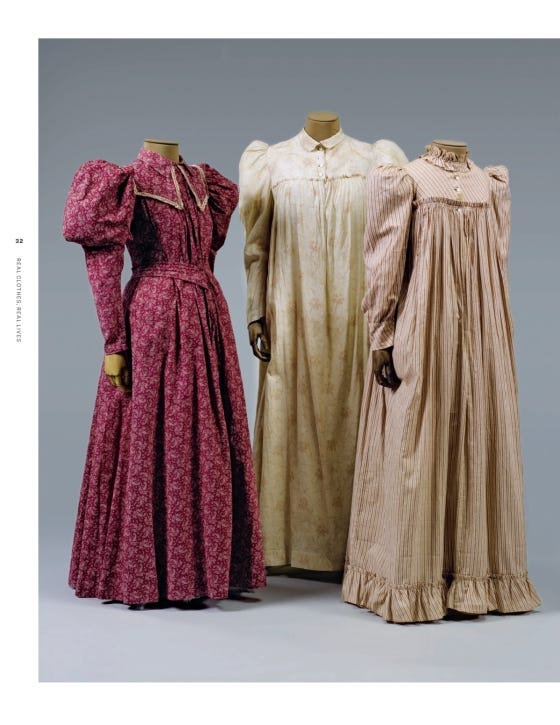
LLW: Who wouldn’t be? I mean, I’m dazzled.
KS: One of the students decided this really ought to be a collection, and she set to work going to New York to meet with the Brooklyn Museum Clothing Collection and then the Met Costume Institute6. She carted along her two favorite pieces from Smith’s collection. The museum professionals were impressed and gave her feedback on what they recommended we prioritize, and in the meanwhile she applied for and got a $10,000 grant.
LLW: Are we still in the 70s?
KS: Yes. And the grant was used to fund student internships to succeed her and also could pay for remarkable, local scholars to visit and identify things…I was a costume designer. I hadn't studied this in great detail - we had lots to learn. Over a period of 40 years, we've had students constantly working here, managing everything from photographing pieces for online cataloging to researching individual pieces.
LLW: Impressive team work.
KS: And all of these pieces come as a donation, everything that's here, which can get a little higgledy piggledy - you get odds and ends.
LLW: I could imagine.
KS: About 15 years ago I discovered how useful eBay was, and found that I could get pieces to fill in holes within the collection for, amazingly inexpensive. Maybe it was an old corset that had a lot of stains or was worn out under the arms, but I didn't care, that corset gave us a pattern, and the students could get a sense of what these pieces were really like…The collection has grown from about 45 pieces to over 4,000.
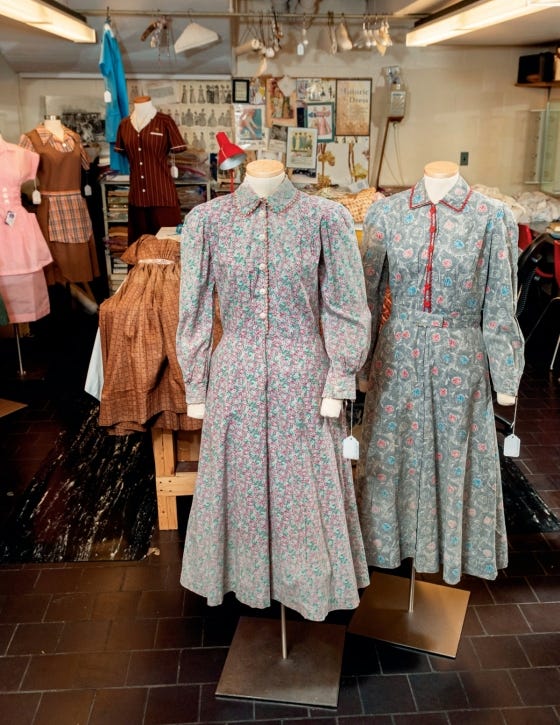
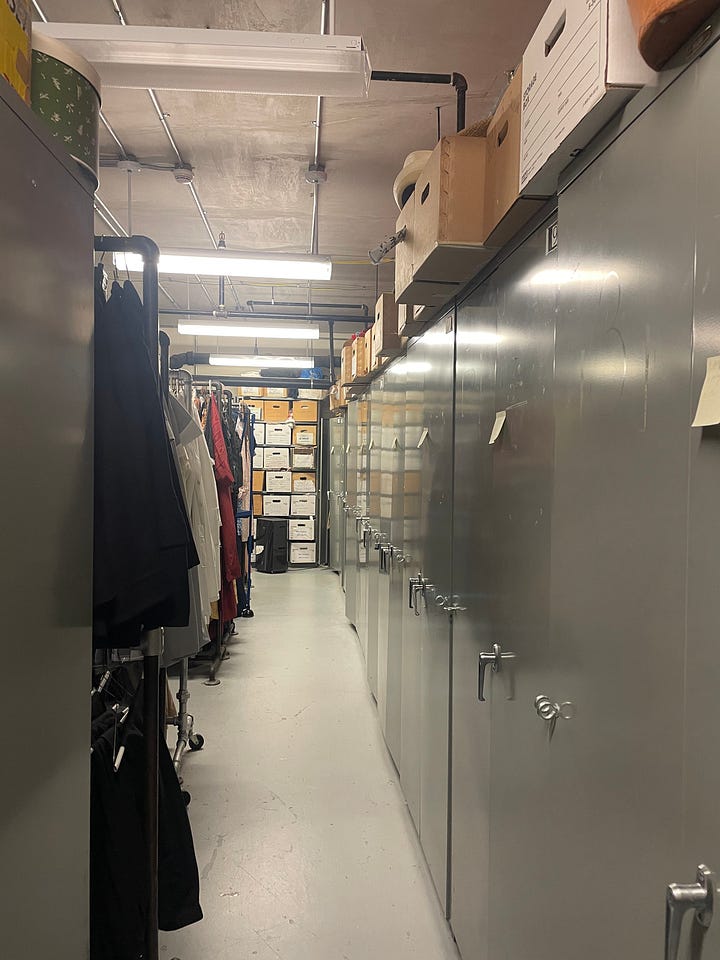
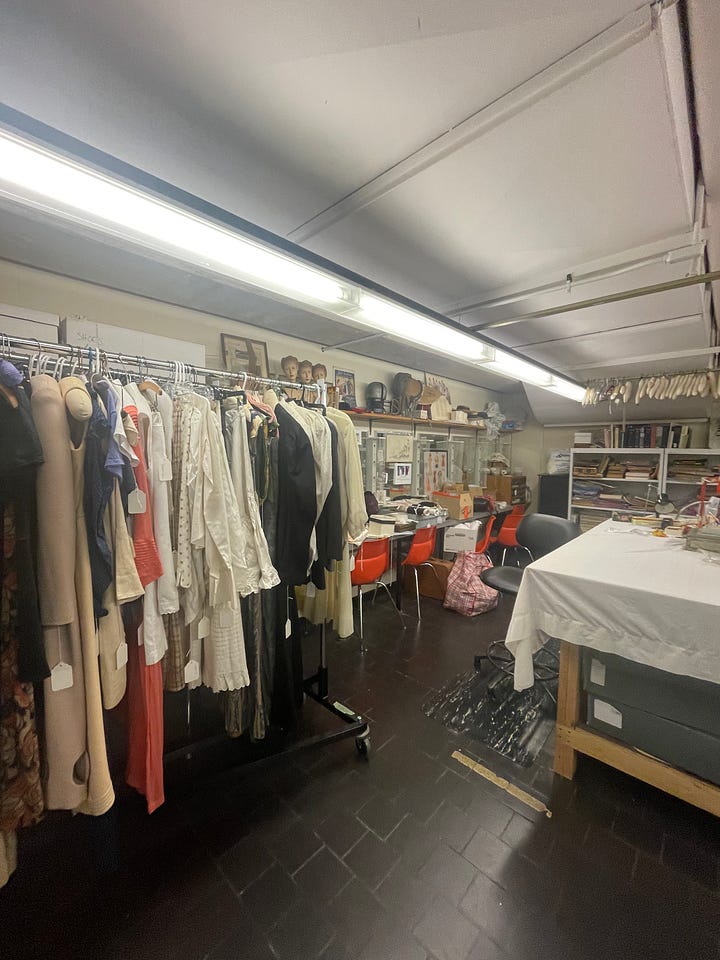
LLW: Wow!
KS: Now in the world of museum collections, this is small, but more recently what I have been eager to collect and to find from people are women's clothing for work, their uniforms or what they might wear in the morning for their cup of coffee. For example, the uniform worn by a woman who works as a housekeeper in a motel. It could be waitresses, nurses, lawyers, all different levels and occupations. One of my wonderful students here said, “You know, Kiki, what you're interested in are social uniforms.”
Bingo.
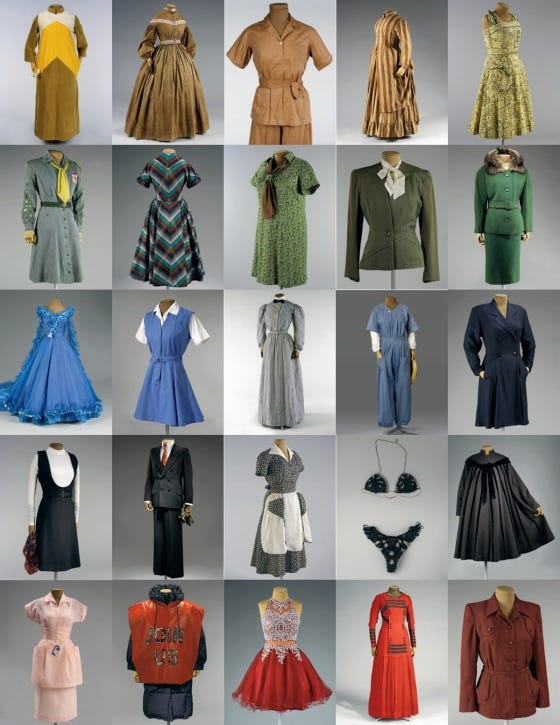
LLW: Great phrase, “social uniforms.” I imagine this collection is a fantastic gateway to get your students talking about clothing, history, garment production then and now…all of it!
KS: Not surprisingly, a lot of students are concerned about the environmental issues, and we can all say we don't like fast fashion, but what can we do about it?
LLW: Understanding and action.
KS: If we cut tariffs, what does that do to the women at the very bottom in Bangladesh who are struggling to live? It's a house of cards. So all the complexity of that…It's all related and it starts here in the collection.
LLW: How would you define historic clothing versus, like, saying a piece is vintage in your collection? Do you have dates that you think about like that?
KS: I'm interested in clothing worn by mostly ordinary people, and they could be ordinary, really poor to upper middle class. I'm not interested in art-like clothes. I mean, they're beautiful, but museums are doing that. I can't presume to collect that nor would I be interested in it.
LLW: Sure.
KS: I'm interested in the history of clothing which encompasses the labor, racial social, economic, environmental and political issues for women. This is a teaching archive, not a museum. This is a place where you can dive into all the different things that made one crummy little piece of limp cotton, and get a sense of how this little piece of limp cotton was actually worn by somebody.
LLW: Note to our Readers: Kiki and her students can touch and use the collection and each of these textiles and different accessories from the 1800, 1900, etcetera. It's incredible. Truly unheard of to handle and inspect these historic clothes.
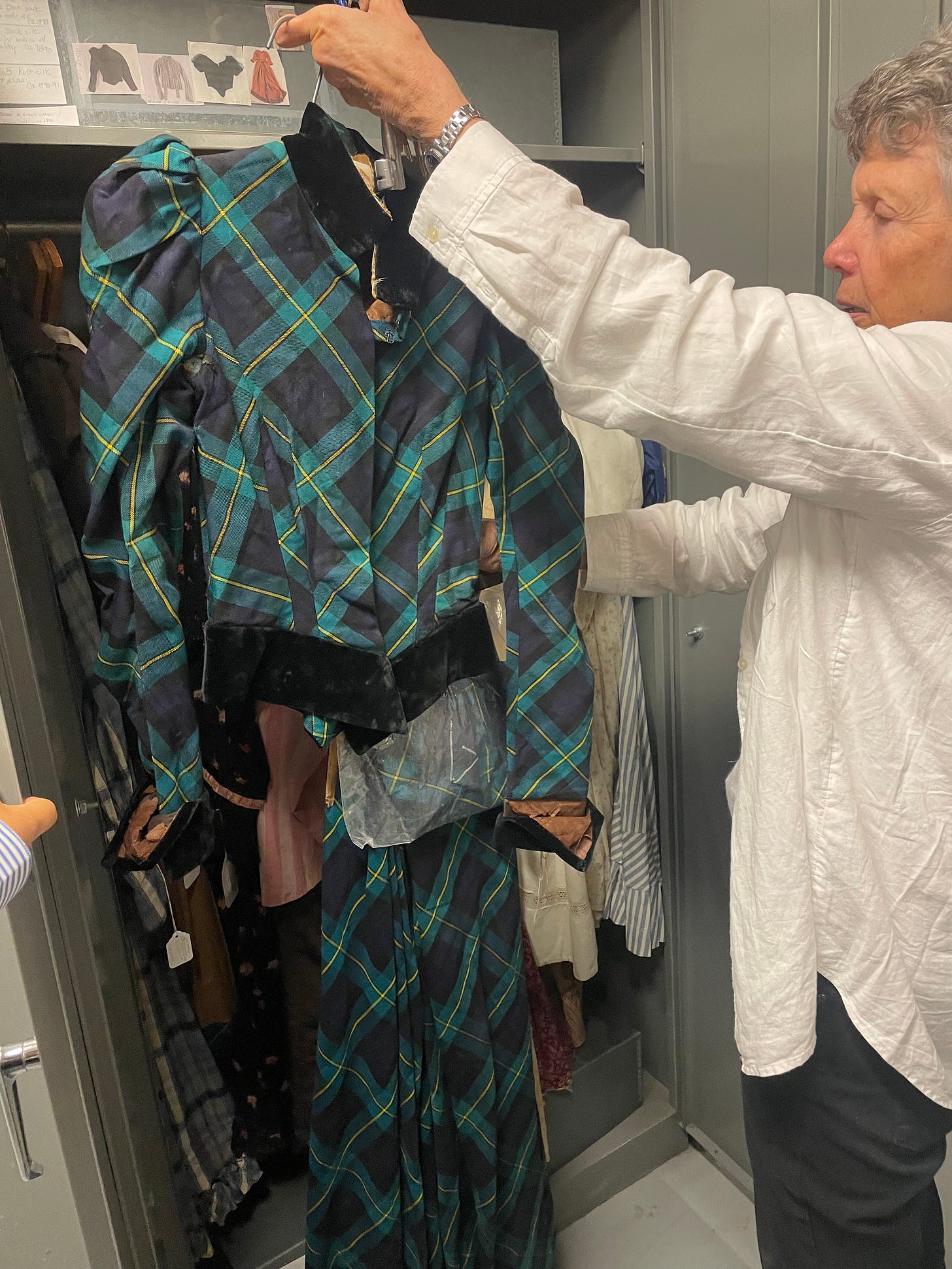
LLW: Kiki, I have to ask: What is your favorite piece in the Collection?
KS: It is sort of like Sophie's choice. Sometimes it's just whatever piece I'm diving into, and the more I can learn about it [the more I’m drawn in], whether I'm learning it from my colleagues who are remarkable costume historians [or otherwise].
I have to say there's a pair of dresses that I bought from somebody selling on Ebay from Chillicothe, Ohio. Ordinary day dresses, and they looked kind of interesting in the little photographs - they were probably $35. They arrived and were worn almost to shreds, and one of them is in the book. One of them I laid out on the table and another student and I noticed it's really faded along the arms. Was it sitting in a store window? It’s not faded down the front. Then we turned it over, no fading around the back waist. It was her apron.
Kiki penned Real Clothes, Real Lives: 200 Years of What Women Wore, a beautiful text that acts like a wonder wardrobe come to life to tell you bed time stories. The text features a foreword by Diane von Furstenberg (yes, that one) and introduction by Vanessa Friedman, the fashion director and chief fashion critic for the New York Times. Learn more and purchase here.
LLW: Fascinating.
KS: This was a woman who was outside a lot. Working, doing chores, and whatever of her wasn't covered was bleached out [by the sun]. The [dresses] are cheap, really cheap, cottons. It has cheap trim around the neck, really cheap little plastic buttons down the center front that aren't even practical as it actually closes with snaps.
LLW: So they're there to make it look like you've got buttons?
KS: The buttons were originally red and now they read as white…I look at these two pieces, and think ‘Is this fifties? Earlier?’ It's 1938. 38!
In the middle of 1938 in Chillicothe, Ohio, as a student who comes from there later told me, its coal country. [Knowing this] Appalachia during the Depression and the poverty that these two dresses faced and survived, comes to mind.
LLW: It’s like time travel.
KS: [Yes] and if my students can see these two dresses, they might get a really visceral idea of what kind of suffering these women would have gone through.
LLW: Hearing you talk about these garments, I’ve concocted this woman, the original owner from the 1930s, in my mind. Think how much she got out of her clothes, whether they were cheap or not. They had to work for her and they worked for her until the day she died. She wore them into the ground.
And all the things she thought and did and cried, laughed, prayed, whatever she was doing in those dresses. Uh, I just All of the The whole thing she gravitas of that becomes so much more real.
KS: Any person who sees this dress and really gets to understand the context of it, where it came from and how to read it, how to understand that it is not just a weird crummy dress. There was somebody who wore it to shreds and patched it.
LLW: And someone's lineage that brings us today.
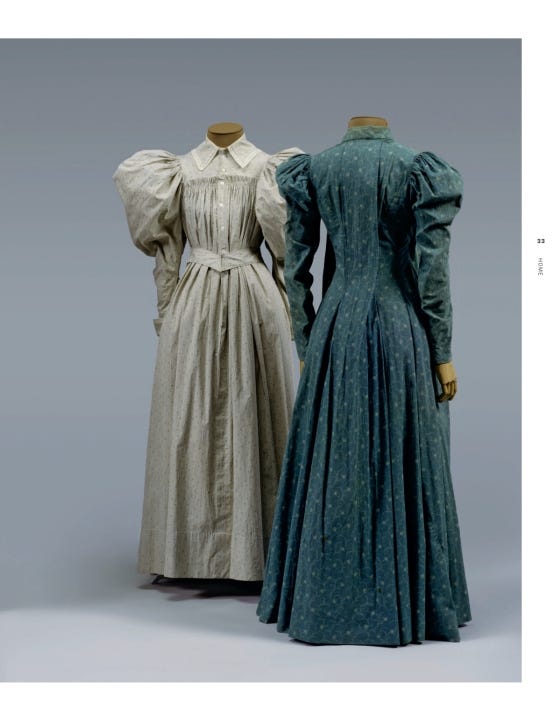
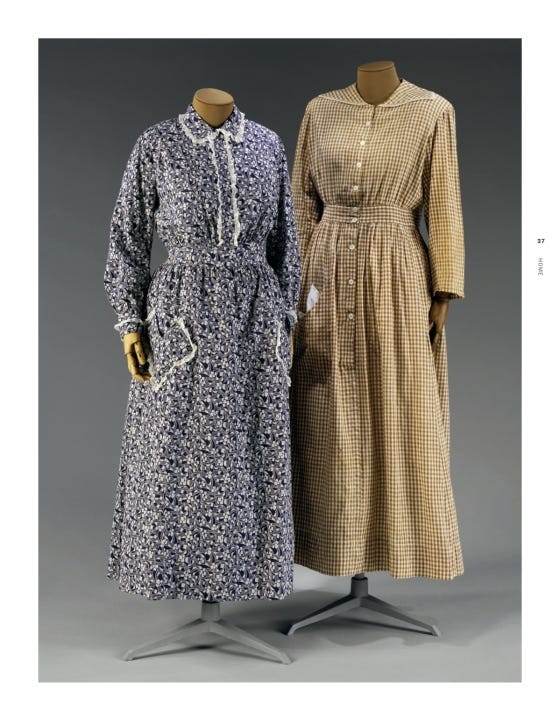
LLW: The 21st 18th newsletter started because I had all these nagging obsessions that called for more deep investigation. I’m assuming, you may have some of these too. Would you share with us what you are currently obsessed with?
KS: I guess there are 2 parts to this. 1) I'm obsessed with trying to set up this collection so it survives and so I can retire, and the college can embrace it as an important part of the study of women.
LLW: Important.
KS: 2) This is kind of a mini obsession: I am going to teach a class on women and pants next semester.
One dear scholar friend of mine pointed out there's never been a book or exhibition about women in pants. I’m going to make the topic into a course, and I realize women were wearing pants in many other cultures for centuries before the women in Europe and America adopted them, so we won’t just look at it from the narrow perspective of the West.
There will be a section focused on helping students understand the construction of pants. I have all my students work with thread and needles on an ironed piece of muslin to learn what a hem stitch is and how to baste and sew a 2 or 4 hole button. Now some of these students have never held a needle in their hands, so the quality of the work is not high but these are useful skills.
And they help [students] learn to appreciate the skill it takes to construct and sculpt limp fabric and make it into a form that is distinct. So they'll do a little bit of sewing, but there's so many interesting categories of rational dress, which came in the 1860s, when Susan B. Anthony7 and Amelia Bloomer8 were frustrated with all of the clothes that women were expected to wear - of course, this is the middle class and up, because there were a lot of working women who had rather more simplistic wardrobes, but even those clothes would have had the architecture and style of the time.
I'm looking forward, with some trepidation, to launching into that topic.
LLW: Will this course be taught in 2025?
KS: It's the spring semester. Right around the corner.
LLW: May I just say? You’re doing such wonderful work here. This is useful, educational and incredibly fun and interesting which is the goal of educators, right? To make content and learning relatable and engaging.
KS: And a lot of that goes back to that remarkable mentor, Nancy Rexford, who taught me that a teaching archive, if you're really gonna teach people and learn, needs multiple examples. Not just a best one. We have multiple examples of drawers that were worn under the pantaloons, I'll pick out a range of them to find multiple examples for the students to study and learn from, and while we don’t have everything we can fill in gaps from other collections.
LLW: Personally, outside of all the historic clothing, what do you gravitate toward collecting?
KS: Here's what comes out of me: It's whatever makes me amazed and full of wonder. It could be the little straw bonnet from 1845 that I found in an antique store in Vermont. Or I look at these Asian hats and African hats [motioning to the hats hung on the wall of her office] and think about the people who made them. I look at a beautiful French 1920s piece…you become connected to [these things] physically when you can look at them up close. They're just amazing creations. It's the creation of the hat with the pair of hands or groups of hands that fascinates me. It’s about paying homage to the creators.
LLW: And most of them are anonymous.
KS: We'll never know who they were. Or we create faces in our minds. I’m in awe of those anonymous amazing women. And they're mostly women who did this labor.
LLW: I’m curious, was there costuming in a play or movie or tv show that really inspired you?
KS: I watch very little television. But the other Saturday night, very unlike me, I went to see Beetlejuice Beetlejuice, and of course, the costumes are fabulous.
When I look at some of those costumes, they are brilliant, and I'm delighted to celebrate the brilliance of another designer. I particularly am interested in theater because there are things that theater can do, which I call theatricality, which is a suspension of belief that people can put out something that is so obviously trite and contrived. But the way the actor uses it, you understand what they’re intimating. Everyone in the audience gets it.
LLW: Thinking about theater costuming and props from that perspective, it’s almost like magic.
KS: You’re right. Kind of like magic.
In addition to teaching, Kiki Smith is also a professional costume and set designer. She designs for regional theaters and choreographers, including the Talking Band in New York and Shakespeare & Co. in Lenox, Massachusetts, where she is a founding member.
Smith won a Village Voice OBIE award for her designs for the Talking Band's 2003 premiere of Ellen Maddow's A Painted Snake in a Painted Chair, directed by her colleague Paul Zimet. She earned an A.B. from Smith College in 1971 and has a master's from the University of Virginia and a master's of fine arts in theater design from the University of Texas.
Smith teaches two levels of costume design, supervises student designers and oversees the Smith College Historic Clothing Collection. Other special topics courses she has offered include Design for the Dance, Twentieth Century Fashion Designers, and Making Theatre Illusion with Costume Construction, Masks and Makeup.
We appreciate you joining us as we slipped back in time to 21st & 18th’s visit to Smith College’s Historic Clothing Collection. The Collection and Smith’s theatre department, where Kiki Smith is a professor, are seriously impressive and inspiring. I left Kiki’s office and Smith’s campus with a nagging excitement to create. It was as if in ‘returning to school’ I left campus with homework, homework to stay curious and keep asking questions — thank you, Kiki and to the women of Smith who have played varying roles in the building of this important Collection.
Smith College is a private liberal arts women's college in Northampton, Massachusetts, United States. It was chartered in 1871 by Sophia Smith and opened in 1875. It is a member of the historic Seven Sisters colleges, a group of women's colleges in the Northeastern United States.
Known by most of 21st & 18th’s Readers as Sears, the original company, Sears, Roebuck and Company was founded in 1893 by Richard W. Sears and Alvah C. Roebuck. The concept began as a mail-order catalog business and eventually expanded to include retail locations.
Anton Pavlovich Chekhov (b. 1860 - d. 1904) was a Russian writer who specialized in plays and short stories. A number of Chekhov’s works are regarded as classics and most of his plays explored the rural Russian life and the downfall of aristocracy in a tragicomic way.
If this is your cup of tea, see here for more information on both of these institutions and how they partner together for the sake of fashion history.

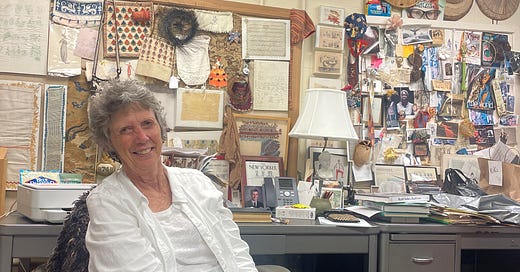


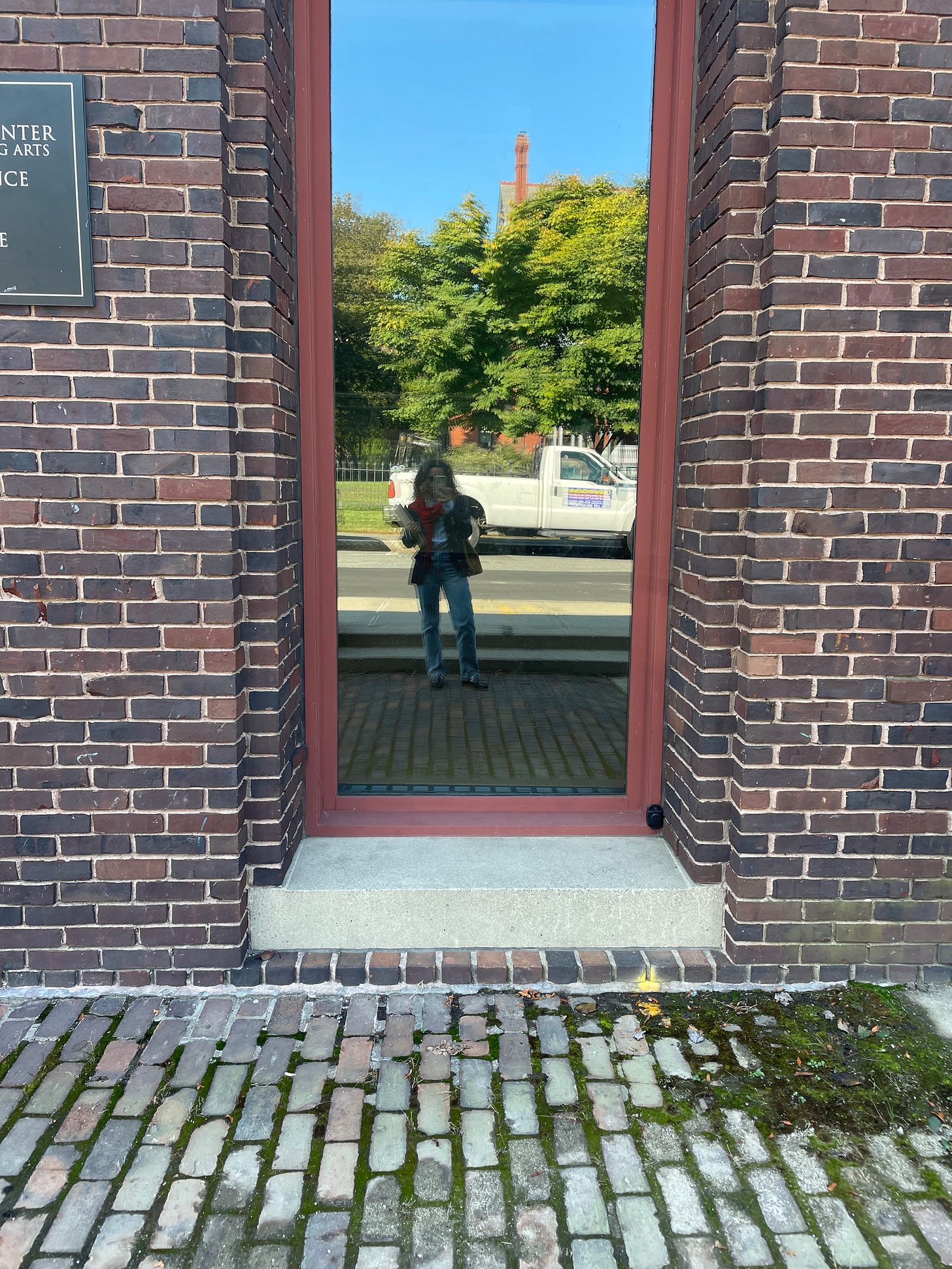
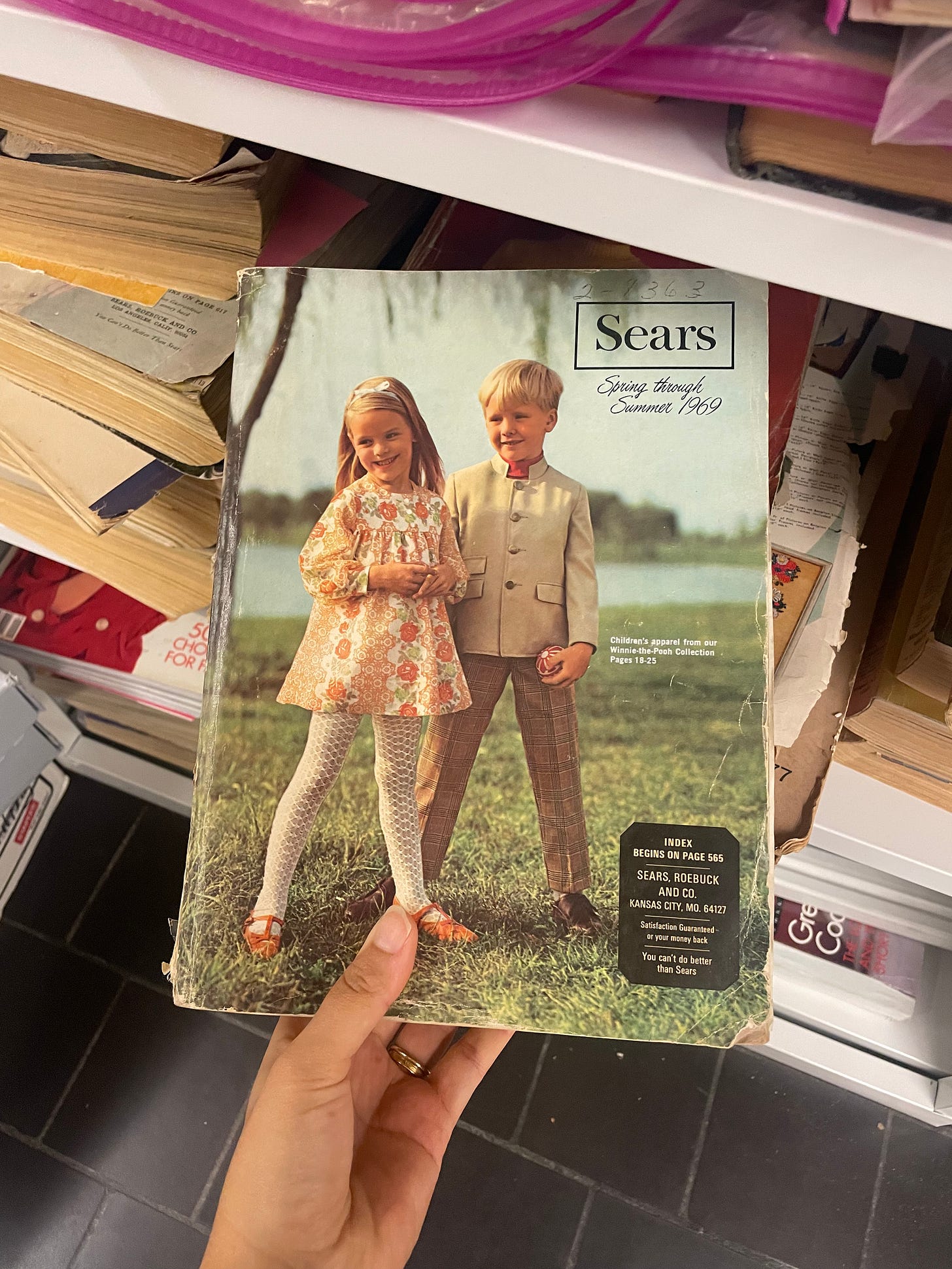
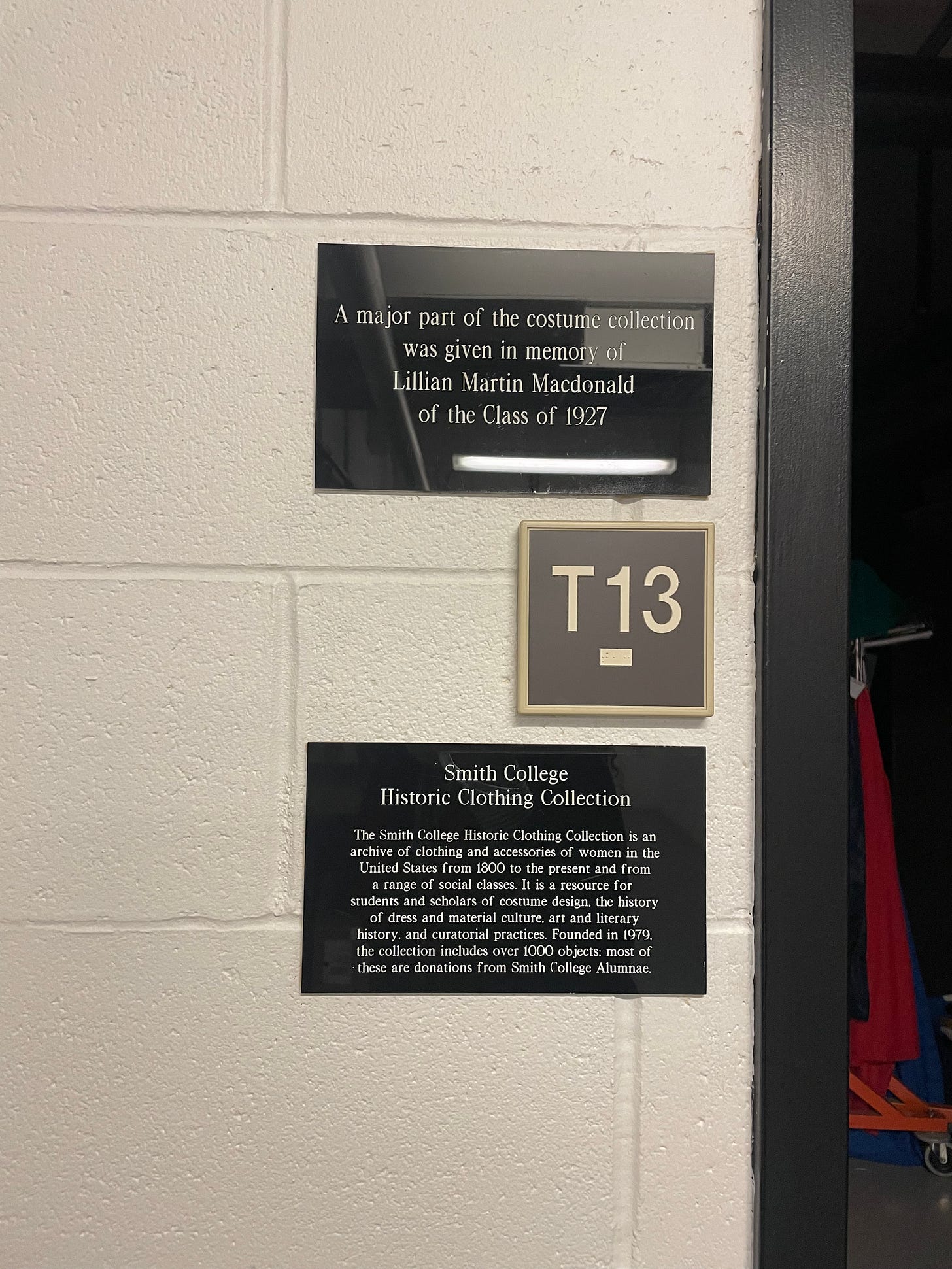
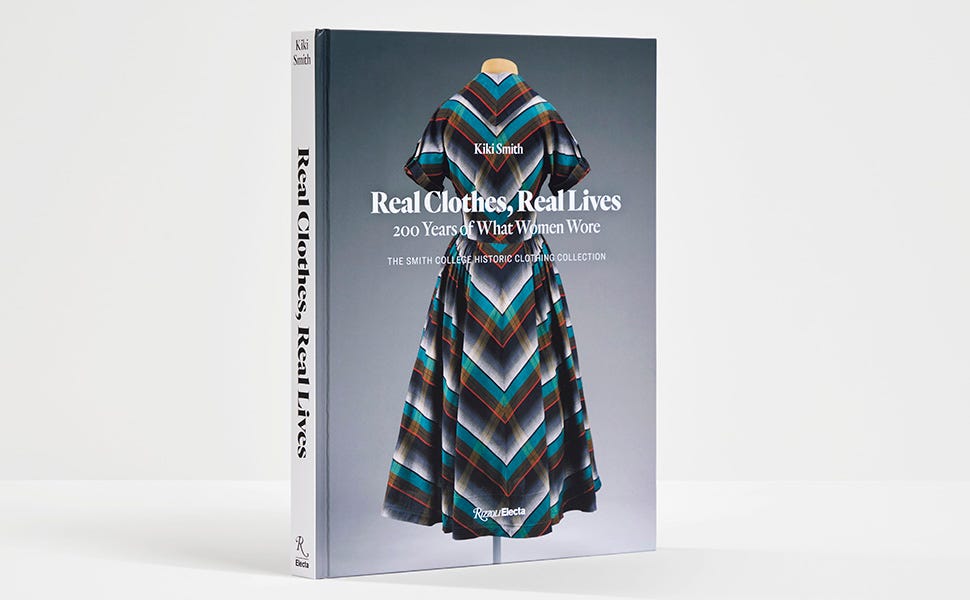
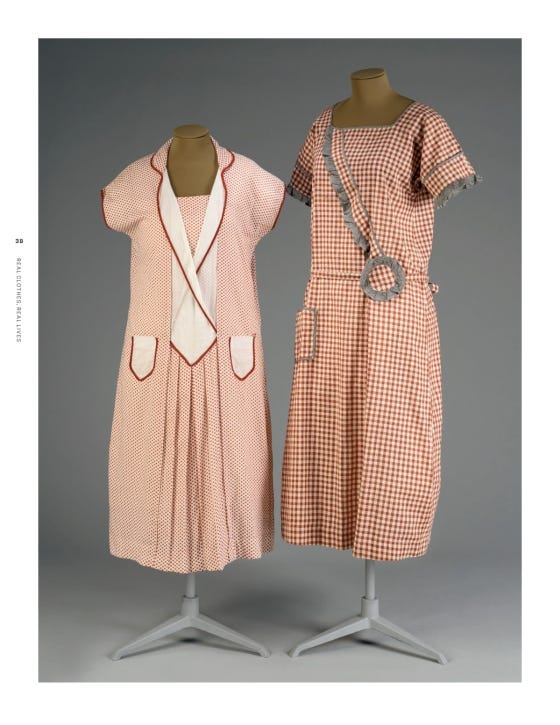
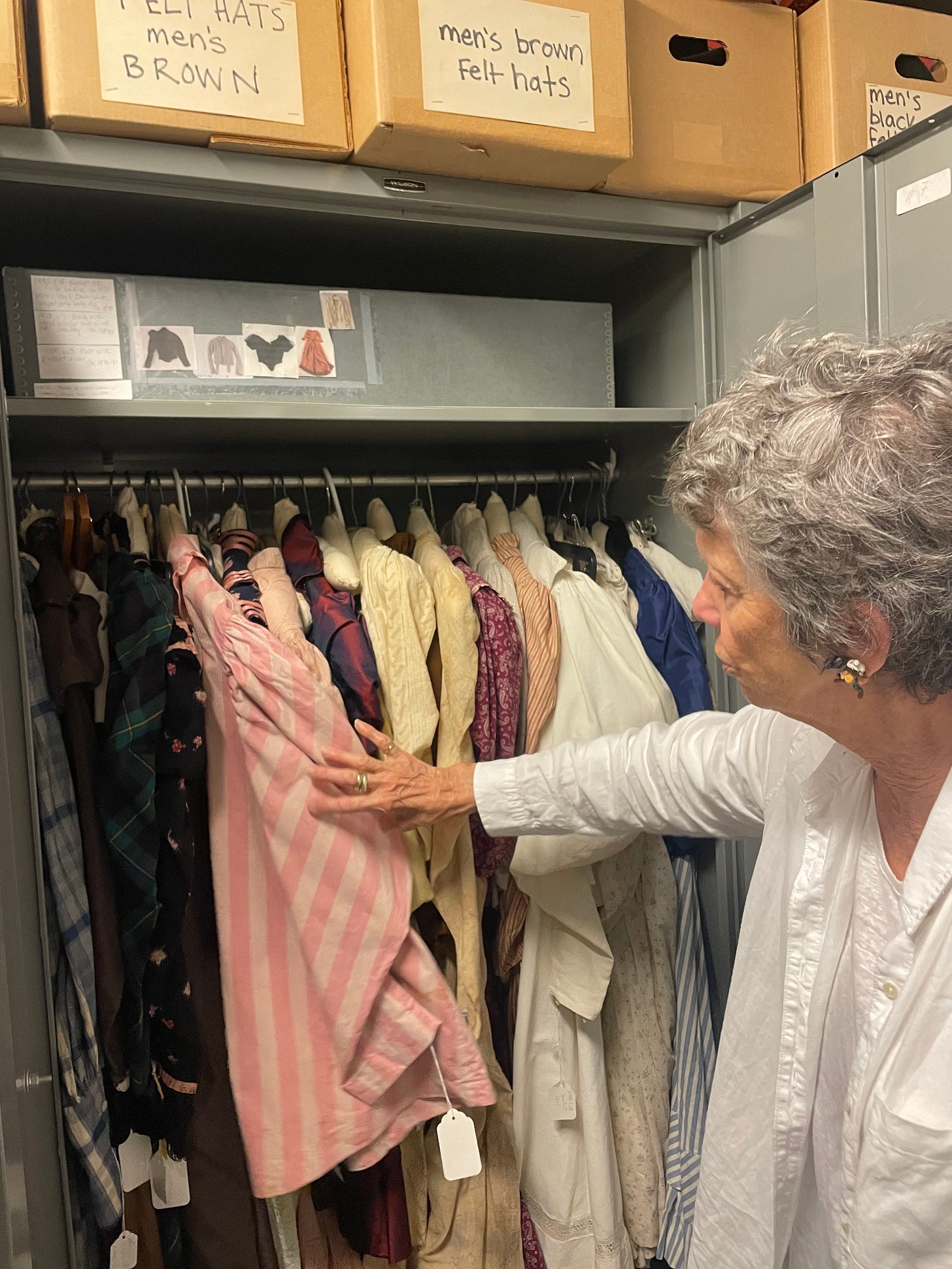

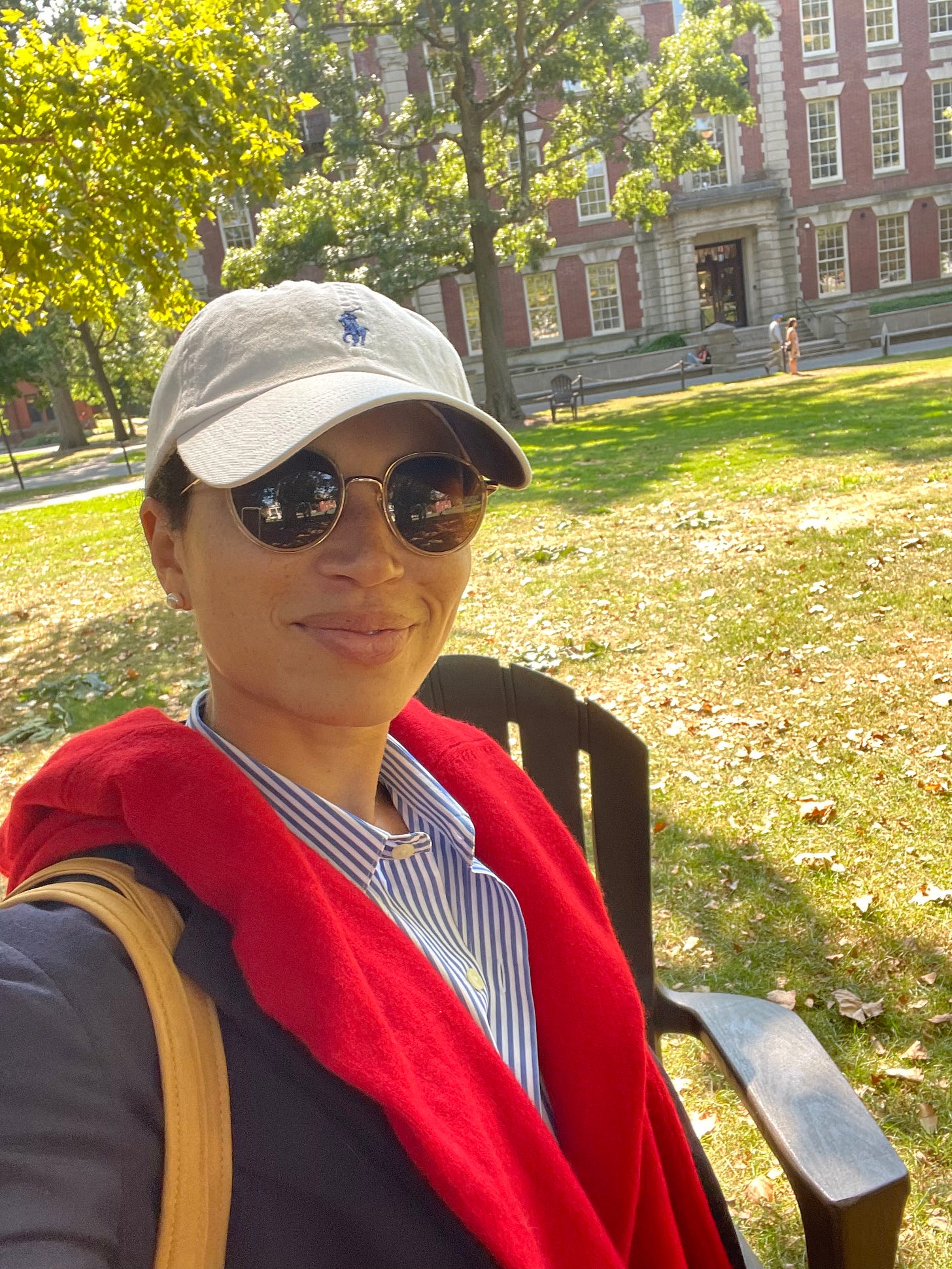
Interested to learn more about Kiki and Smith College’s Historic Clothing Collection? Here is 21st & 18th’s recommended reading:
NY Historical Society: https://www.nyhistory.org/exhibitions/real-clothes-real-lives-200-years-of-what-women-wore
New England Public Media: https://www.vermontpublic.org/2024-09-26/a-history-of-what-women-wore-these-clothes-tell-a-story-that-has-so-often-been-ignored
NY Times: https://www.nytimes.com/2019/04/29/fashion/smith-college-clothing-collection.html
Wall Street Journal: https://www.wsj.com/arts-culture/fine-art/real-clothes-real-lives-200-years-of-what-women-wore-the-smith-college-historic-clothing-collection-review-sensible-silhouettes-at-the-new-york-historical-f9807451
Follow SCHCC on Instagram: https://www.instagram.com/smithcollegehistoricclothing/